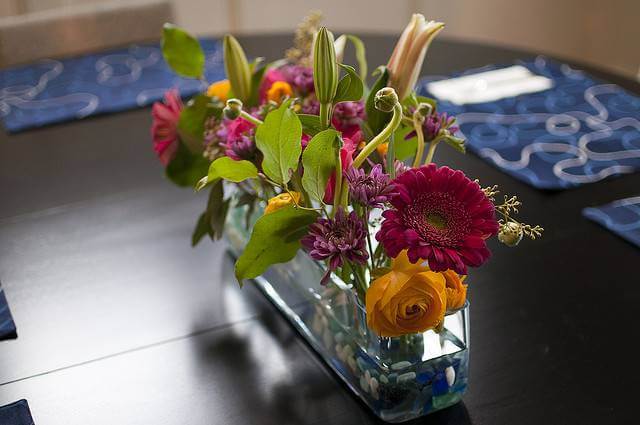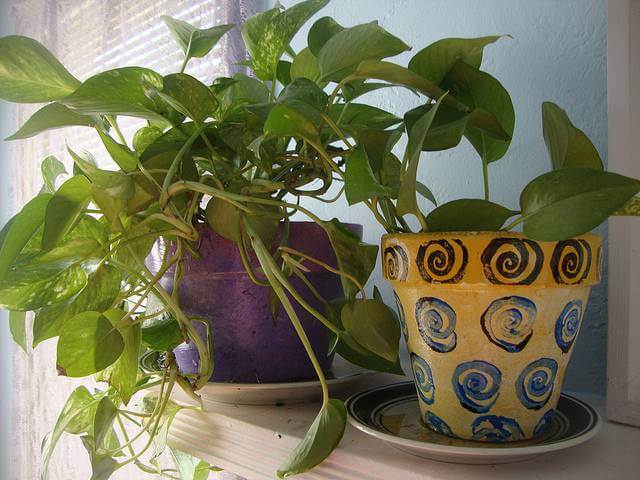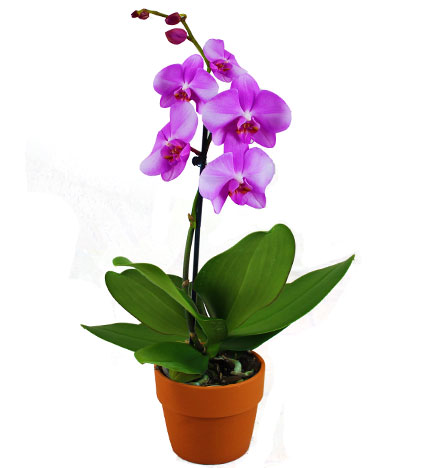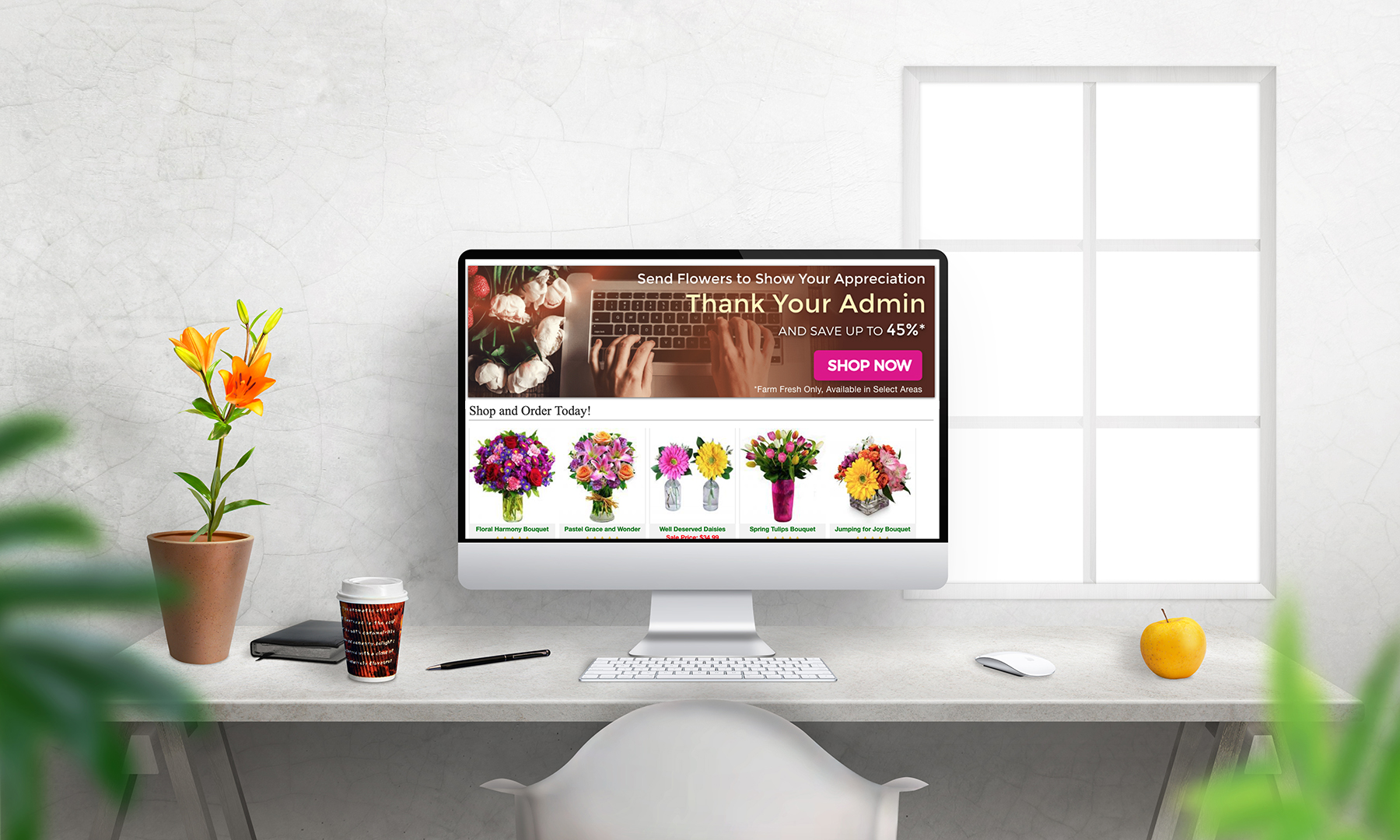There’s no denying the positive, revitalizing effects that live plants and flowers add to any decor. Our working and professional interior spaces can be made more relaxing, welcoming, and interesting with accent plants. So follow the urge to cultivate a bit of soothing green space at your own desk, where people are greeted, business is transacted, or simply hard and tedious work must be done.
It is on the desk or at the reception counter where a plant or arrangement of plants will be seen up close, where people are first impressed. Therefore, the first step to better desktop gardens is take home all scraggly dish gardens with bedraggled ribbons, plants with scale insects, spider mites, or mealy bugs, along with any plant which is not thriving. Revitalize these in private and get something new. Office plants and flowers should be healthy morale boosters for both desk occupant and visitor.

The principles of desktop gardening are simple and few.
- Consider how much space you can comfortably allot to a container or plant. There may be room for something grand, or simply 3″ for a green vine in a vase. Furniture surface is important- will condensation between the container and furniture surface cause damage?
- Plant selections expected to last indoors usually have to be those with a low light requirement. Seasonal blooming plants vary in longevity and can be replaced on a schedule. But they shouldn’t be kept on display past their period of looking vibrant. Shedding petals, dropping leaves, or moldering about the stems are disappointing to behold.
- Soil, which many people perceive as “dirt,” should not be seen in a decorative desktop planter, but covered with moss or stone, stone being the neatest overall option, since mosses can dry and become crumbly.
- It is better to avoid cacti and bromeliads with spines for desk gardening. Also, Golden Pothos, though a hearty indoor plant, earned its common name “Devil’s Ivy” because of the irritating sap which oozes when leaves or stems are broken.

Do not heavily water a desk garden or station plants under a cold air conditioning vent.
One way to not worry about soil and over-watering is to use plants which grow well in water and stone. “Lucky Bamboo” (not a true bamboo, but Dracaena sanderiana) has rapidly gained popularity as a conversation piece, thanks to the creativity of florists and nursery growers who have devised unique ways of shaping the canes, tying stems together, and selecting containers that will support the plant in water with stones. It is widely recognized now as a lucky plant, communicating good fortune and hope. They are a thoughtful plant to send to new businesses or customers, and on the desktop convey positivity.
My personal favorite reliable indoor plant is the old-fashioned Heart Leaf Philodendron (Philodendron cordatum), very easily grown in vases or bottles with just a few inches or water and stone on the bottom. The plant will grow away from windows in very little light. The leaves are rich green, vining, and supply continuous shoots for rooting and starting up more vases. University studies have shown Philodendron species are probably the most effective shade-tolerant plants for removing indoor pollutants that are detectable in office air.

Tillandsia spp. are small bromeliads, or “air plants”, requiring very little growing space and substrate. Simple spritzing the leaves where water absorption takes place is all the maintenance required. The bloom spikes are very showy, though a nicely formed Tillandsia not in bloom has an interesting, architectural form. Those who would love to rest their eye now and then upon a small terrarium or vivarium on their desk will find a single Tillandsia arranged in a clear glass bubble or vase, with contrasting moss, a sea shell, or other interesting natural item, ideal.
Vriesea species of bromeliads, with either showy colorful foliage or stunning bloom spikes, or both, are available in dwarf sizes to giants. These come potted in soil or a soil/bark mix, which is kept lightly watered. The center of the rosette-shaped plant forms a vase, which is kept filled with water. The majority of showy bromeliads have spines along their leaf margins, making the smooth-leafed Vriesea most popular and suitable for indoor use and gift giving.
A lasting orchid that will continue to bloom indoors is the Phalaenopsis, or Moth Orchid, so named for the shape of the blooms which, in nature, are pollinated by moths that think they have found a mate. This orchid has been hybridized in almost every conceivable color and is a most attractive greeting on the desk or reception counter. These are very tough plants overall, but for proper watering have to be placed in a sink and watered until the network of roots can be seen to turn from white to green. Additional time for allowing the plant to drain before returning it to its station, and application of liquid fertilizer every 4-6 weeks make it higher maintenance than vines in a jar, or air plants in a terrarium. Still, the Phalaenopsis is a thing of beauty when in bloom and something I find relieving when having to sign in at the dentist’s office.

For those desk top gardeners who can take on the challenge of several plants at once is the wide world of dish gardens, of which there are many sorts. Dish gardens are made in glazed pottery, unglazed pottery, large clay saucers, and plastic lined basket arrangements. Sometimes dish gardens come delivered with flowers sprigged in with floral tubes. One must be careful to remove the flowers, once dead, and the tubes, for aesthetics. A “European dish garden” contains an African violet and is usually planted as a woodland scene.
The wonderful thing about dish gardens is they come stuffed with a variety plants and herein lies the opportunity to become a true desktop gardener: cultivate those plants which thrive and weed out those which detract from the rest. It’s a variable phenomenon how certain people do very well with certain plants in certain places, but have no luck with others. If a plant likes its place, it will thrive, so dish gardens provide multiple chances for the gardener to find one or two in the group that will do well and keep growing.
The plants commonly encountered in green dish gardens are the: Prayer Plant (Maranta) Dracaena marginata, D. sanderiana, Tri-Color Dracaena, Philodendron varieties, Golden Pothos, Pilea, Peperomia, Palm sprouts, small Dieffenbachia, Chinese Evergreen (Aglaonema), small Vriesea or Tillansdia, ivies, Croton (Codiaeum), small Anthurium, and Peace Plants (Spathiphyllum.)
Sometimes, not all the plants in a dish garden have the same horticultural requirements. This accounts for the natural selection, or survival of the fittest you will witness in your desktop garden as time goes by. Dish gardens should not be overwatered past the point of being evenly moist, and are best left to become dry, but not wilted, then watered in a sink where the leaves may be washed down and the container allowed to drain and leaves dry before returning the garden to its location.
There is one last option for those who are absolutely certain they cannot grow a plant. A desktop Zen garden is essentially an attractive shallow container filled with white sand and a pebble or two. A small rake is provided for tracing patterns in the sand, or arranging pebbles. No water or light needed, but could become a problem if children get into it, while it is a contradiction of the principle “no dirt on the desk.”
Leigh Fulghum runs the very popular site http://www.floridaplants.com/ and is a cultural botanist. She has worked for over 30 years in South Florida as an award-winning freelance landscape designer, horticultural consultant, and biological environmental consultant. Leigh has scientific expertise in plants of all South Florida ecosystems as well as in commercial, residential, and natural site design.
![[Avas Flowers] Avas Flowers](https://www.avasflowers.net/newimg/avas-logo-new.png)

